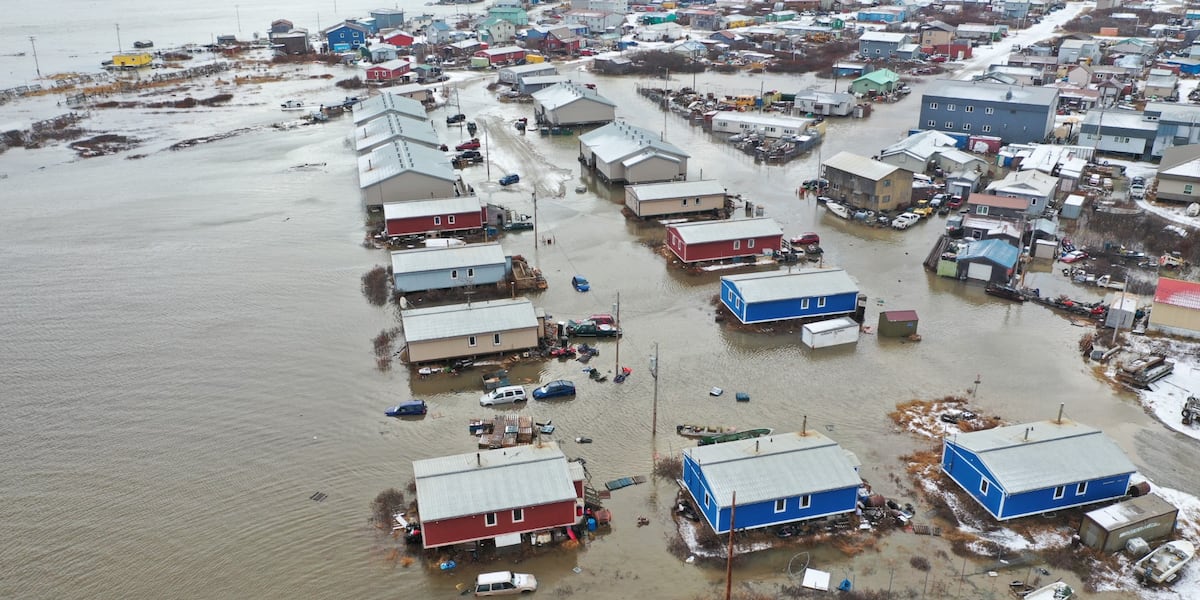With higher temperatures settling in, it feels like summer has finally arrived. For those looking to relax with a good book, we asked some of Alaska’s most notable authors and literary figures what they were excited to read this summer — or to perhaps mention what book they recently read that they’re enthusiastic about recommending. The submissions ranged from novels, nonfiction and memoirs and selections by writers from Alaska, and beyond.
“The Dog of the North” by Elizabeth McKenzie
It’s a funny and heart-breaking story about a modern woman who tries to leave her messy life behind, with all the drama and hope one can bear.
— John Straley, Sitka, author of “Cold Storage, Alaska”
“Fatherland” by Burkhard Bilger
An editor at the New Yorker once suggested I look up the stories of staff writer Burkhard Bilger because there was so much to learn from seeing how he assembles his non-fiction. Holy smokes, was that good advice. Bilger has a new book out, “Fatherland,” telling the story of his grandfather, a Nazi official during the war. Anyone struggling to write their own problematic family histories could learn a lot from the ingenious narrative fashioned by Bilger, born in the U.S. to German immigrants with a puzzling past.
“The Passenger” by Cormac McCarthy
The recently departed novelist Martin Amis once said writers read for pleasure or they read for plunder. I was wary approaching Cormac McCarthy’s new novel, “The Passenger,” as some of his other novels had passages of heavy sledding. But this one is all pleasure — and too brilliant to plunder. (I also look forward to re-reading Amis’s pleasurably funny novel about plundering rival writers, “The Information.”)
— Tom Kizzia, Homer, author of “Cold Mountain Path”
“An Immense World: How Animal Senses Reveal the Hidden Realms Around Us” by Ed Yong
Some books lever open our minds, and this is one of them. We humans tend to think we’re the norm in how we sense the world, but we’re missing out on so much. For a start, we can’t see ultra-violet light, but guess what? Most other warm-blooded creatures can. What looks to us like a drab female bird might in fact be a riot of swirling ultra-violet designs. Neither can we hear the incredible intricacies of bird song, or detect magnetic waves, or — well, read the book because Yong will take you through how immense the world actually is. Not only will you gape at some of the information, you’ll chortle at Yong’s jokes, because he has a wicked sense of humor.
— Gerri Brightwell, Fairbanks, author of “Turnback Ridge”
“Good Night, Irene” by Luis Alberto Urrea
Urrea was the guest author at last year’s 49 Writers Tutka Bay writing retreat. The novel is based on the true experiences of Urrea’s mother with the Red Cross during World War II.
[In ‘Mothertrucker,’ a road trip on Alaska’s Haul Road brings an escape, beauty and joy]
“Mothertrucker” by Amy Butcher
This year’s Tutka Bay Retreat featured author, the memoir is based on her experience riding with Alaska’s only female North Slope ice road trucker.
“Sivulliq: Ancestor” by Lily H. Tuzroyluke
I only recently heard of this debut novel by way of Alaska Public Media’s “Talk of Alaska,” highlighting the resilience of northern Indigenous peoples following the smallpox epidemic and Yankee whaling expeditions of the late 1800s.
[The ancestry and activity that informed Alaska author Lily Tuzroyluke’s celebrated debut novel]
“Open Throat” by Henry Hoke
This new novel is inspired by P-22, the celebrity mountain lion of Los Angeles fame. My parents were both born in LA, and who could resist lines such as “I feel more like a person than ever because I’m / starting to hate myself.” And “I’m old because I’m not dead.”
— Molly McCammon, Anchorage, 49 Writers board president
“Robert E. Lee and Me” by Ty Seidule
The American Civil War — the most traumatic event in U.S. history — cost nearly 700,000 lives and reduced much of the South to ruins. “Before the last smoke had cleared on the battlefield,” writes Brigadier General Ty Seidule, professor emeritus of history at West Point, “white southerners tried to make sense of their epic failure … Soon, the leaders of the white South put together a new narrative to explain their failure and to maintain racial control and white supremacy. Today, historians call the series of lies, half-truths, and exaggerations the Lost Cause of the Confederacy myth.” Seidule should know. Himself a southerner, he grew up, he says, “on the evil lies of the Lost Cause.” As a boy, he believed with all his heart, as did many others, that General Robert E. Lee — commander of the Confederate Army of North Virginia — was not only the greatest military commander in the history of the U.S., but in the history of the world. In fact, Lee was the “greatest human who ever lived.” What makes Seidule’s book so compelling is that he changed. He read, he studied, he listened. He kept an open mind, and over time he came to regard his boyhood heroes as flawed men. He shed his cozy myths for the cold truth. “As a soldier, a scholar, and a southerner,” he writes, “I believe that American history demands, at least from me, a reckoning.”
— Kim Heacox, Gustavus, author of “On Heaven’s Hill”
“Rough Crossing: An Alaskan Fisherwoman’s Memoir” by Rosemary McGuire
A beaver biologist handed me this book just before his floatplane landed along the Kobuk. I said goodbye, and turned to examine it. It was small, easy to carry, and very concentrated — a story of a tough Alaskan fisher and writer I’d never met, on a parallel journey through a part of Alaska I’ve not experienced. I found her memoir to be a perfect read as the Arctic nights lengthened, and, after 49 seasons commercial fishing and nearly as long attempting to write, I was completely impressed and a little jealous of Rosemary McGuire’s abilities, strength, and thoughtfulness, both on the water and the page.
— Seth Kantner, Kapakavik, author of “A Thousand Trails Home”
“Nichijou” by Keiichi Arawi
History is my hobby, profession, and vocation all at once, so when I want to read something relaxing, I have to head relatively far afield. This summer, I am rereading the classic manga series “Nichijou” by Keiichi Arawi, also made into a similarly excellent anime. “Nichijou,” which translates as “Everyday Life,” recounts the daily lives of ordinary teens who attend an ordinary school in an ordinary town, except that they then endure surreal experiences, like a high school principal wrestling a stray deer. We are all the stars of our own lives, no matter how ordinary they might seem to others. Nichijou recognizes this dissonance and uses exaggeration to emphasize the importance of the mundane, in wholesome, family friendly, laugh out loud narratives.
— David Reamer, Anchorage, co-author of “Black Lives in Alaska: A History of African Americans in the Far Northwest”

:quality(70)/cloudfront-us-east-1.images.arcpublishing.com/adn/XLNTQJJ7SZAQDLVVWYNKN7XOAA.jpg)




















/cdn.vox-cdn.com/uploads/chorus_asset/file/25822586/STK169_ZUCKERBERG_MAGA_STKS491_CVIRGINIA_A.jpg)

/cdn.vox-cdn.com/uploads/chorus_asset/file/25821992/videoframe_720397.png)




